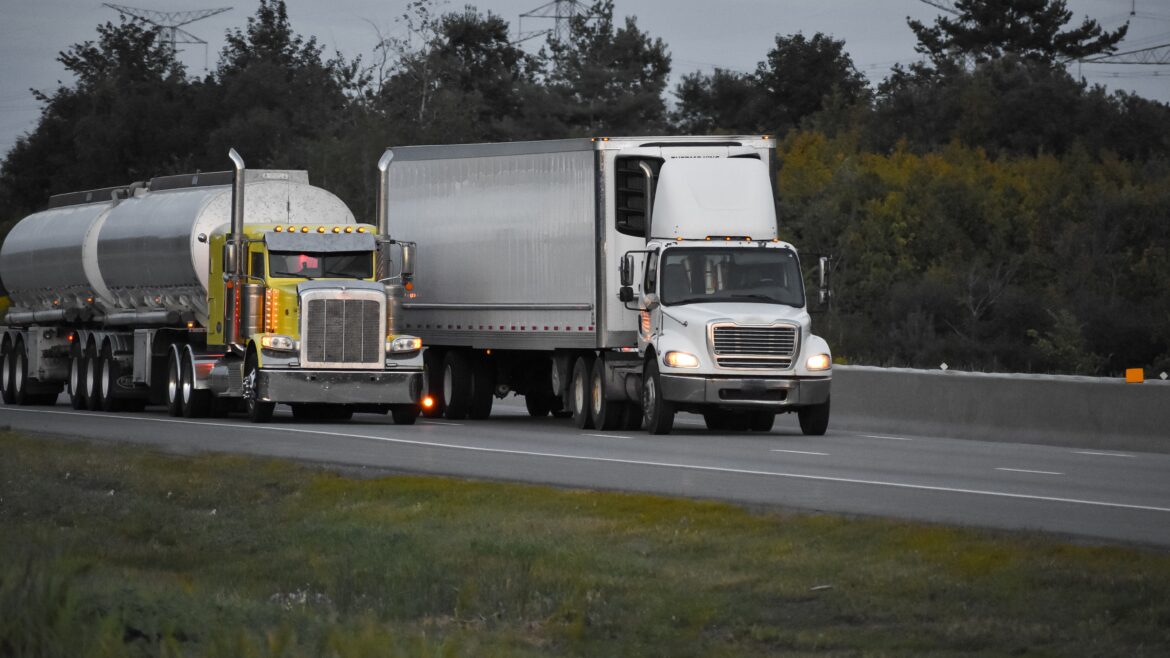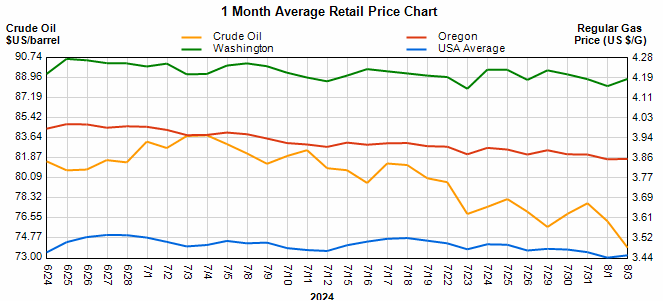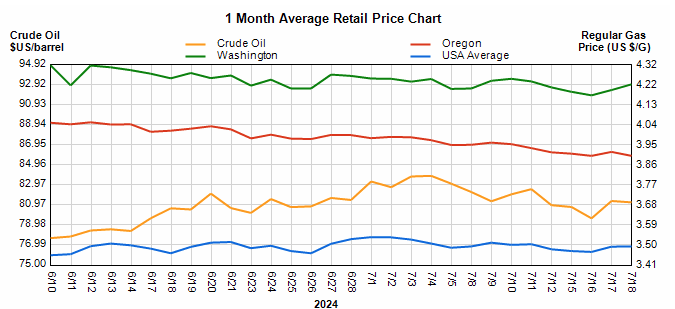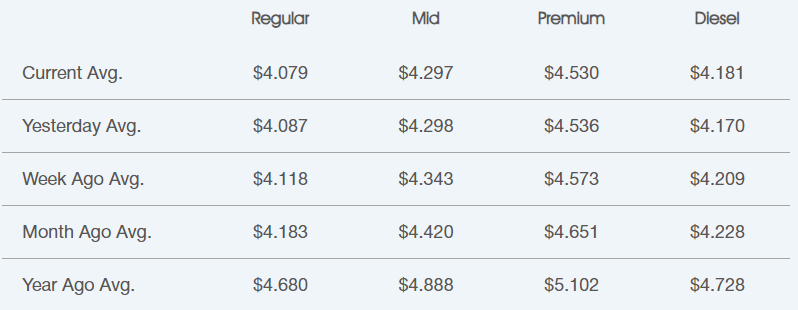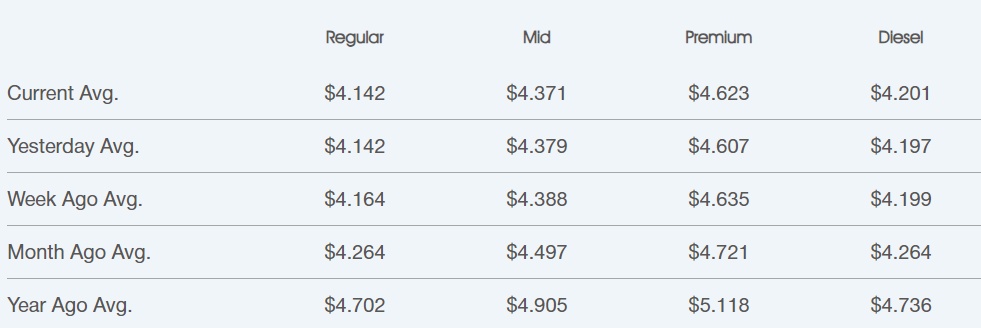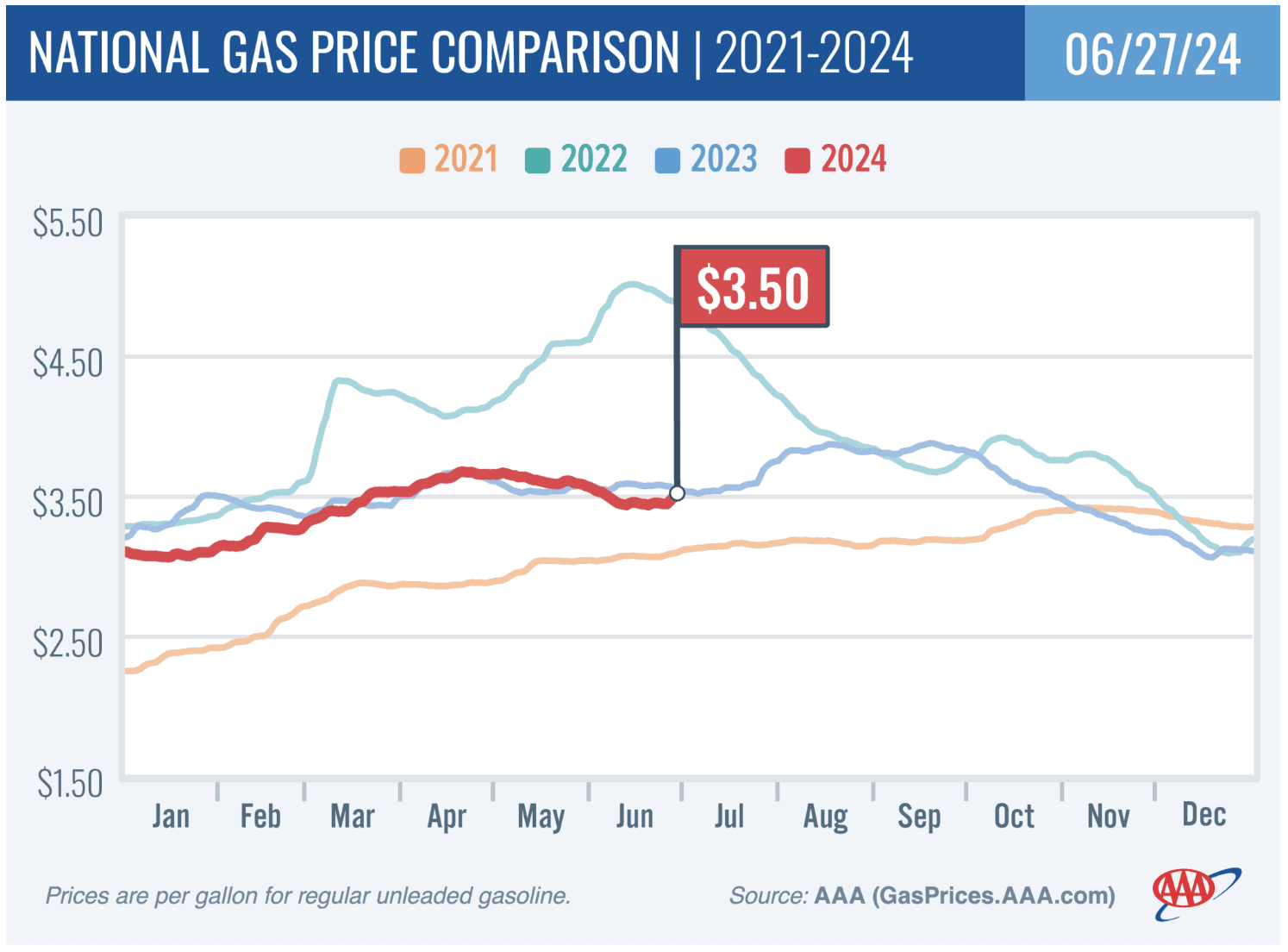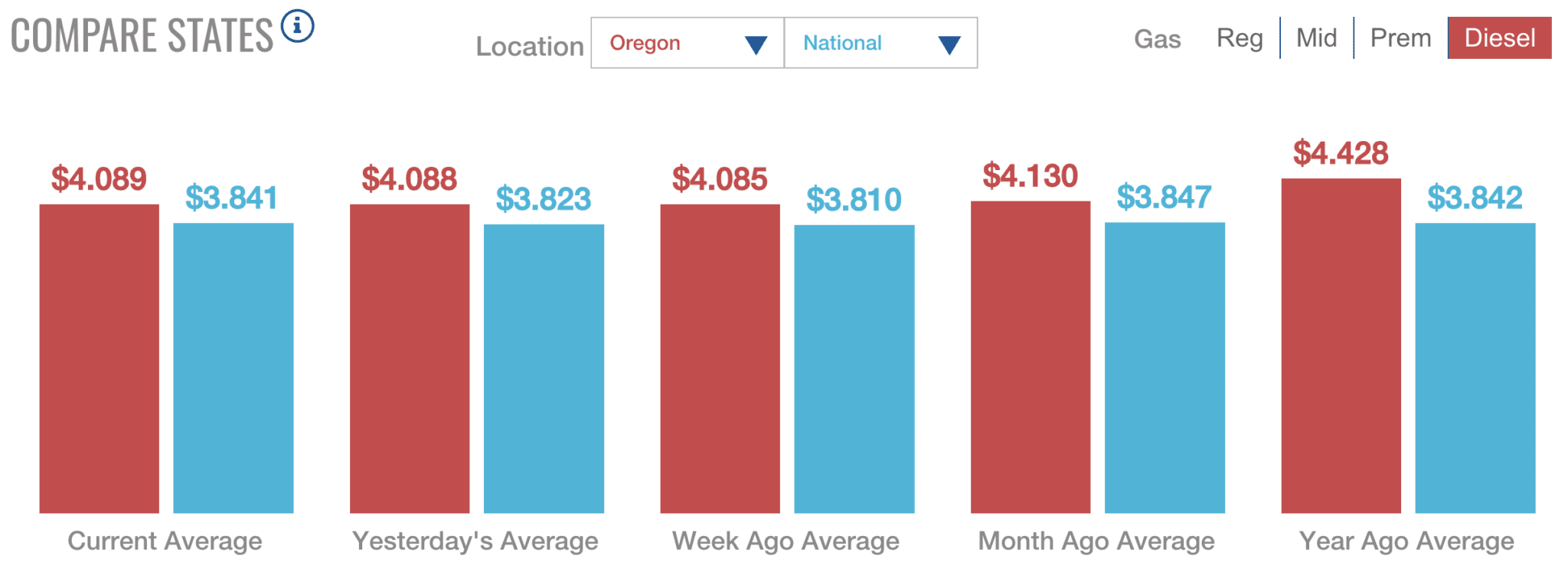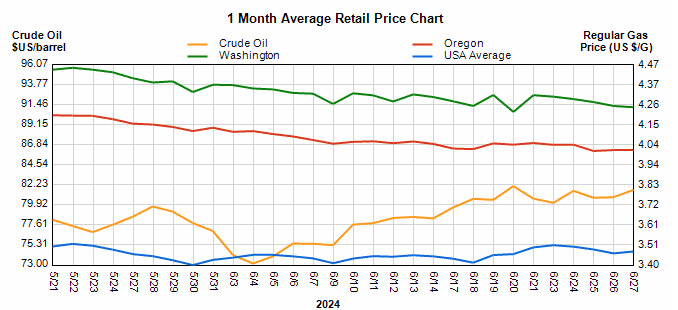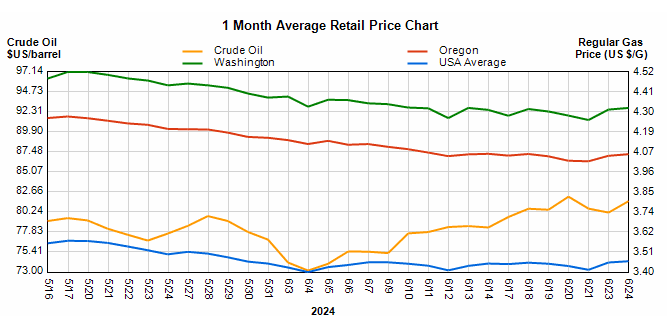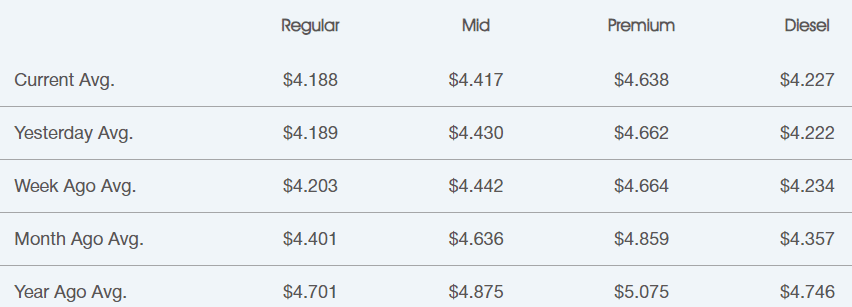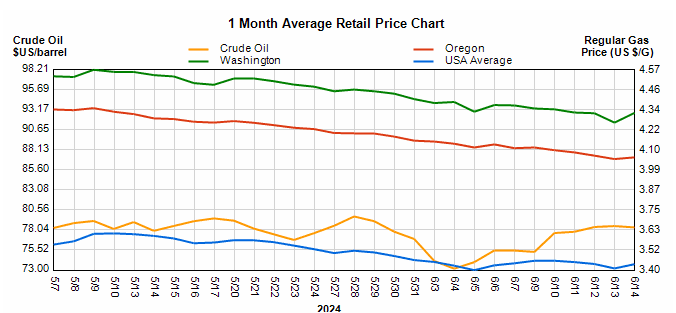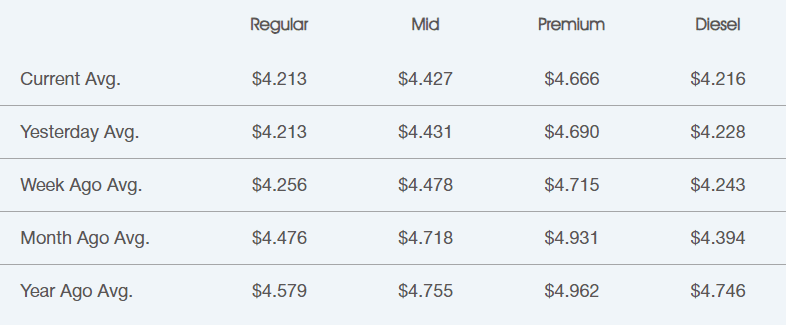Fuel Market Report: Aug 4th – Aug 10th, 2024
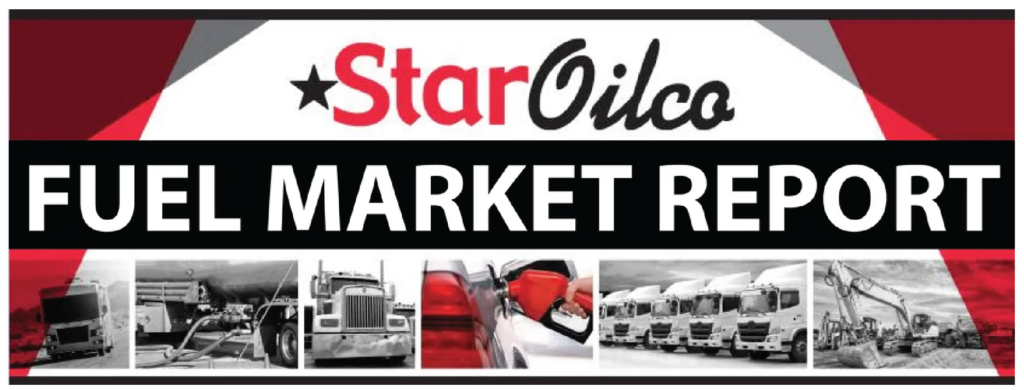
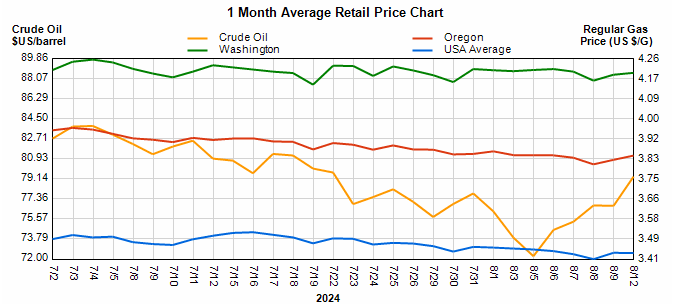



Oregon Fuel Price Variance

Fuel Market News
Prices have continued to drop throughout the market affecting the wholesale market more than retail stations. Rack averages are down for diesel and gas. B5 dropped $0.03/gal while B20 dropped $0.04/gal with gasoline having the biggest drop this week of $0.08/gal. The retail market did not see these pricing shifts trickle down, as the retail average for gasoline and diesel in Oregon did not drop more than $0.04, a pricing shift hardly noticeable by drivers. Summer demand for fuel has seemed to blow by this year as prices have been relatively low all summer. We may see prices trickle up as we approach the Labor Day weekend and the uptick in travel.
Curious to learn more about R80/B20 blends?
Book an appointment with one of our low-carbon fuel analysts.
City of Portland began their fuel blending requirements for all diesel blends to increase to the minimum of a B15 blend. This will lead to most stations using B20 biodiesel or R99 Renewable diesel if allocations allow for it.
To learn more about these changes that will affect your company’s vehicles, equipment, and annual fuel purchasing schedule an appointment with one of our fuel market analysts.
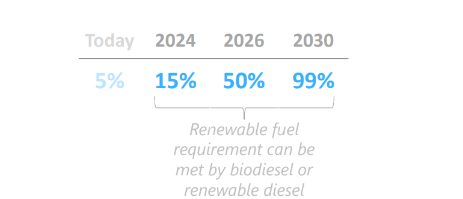
Important Note: Per the City Of Portland, “Distributors in the City of Portland are required to meet the minimum biofuel content requirements for all fuel they distribute beginning on May 15, 2024. All diesel fuel distributed to retail stations, non-retail dealers, or wholesale purchaser-consumers must include a minimum of 15% biofuel content, from either renewable diesel or biodiesel. This requirement increases to 50% on May 15, 2026, and 99% on May 15, 2030”.
Reasons For Price Variance:
Crude oil is trading below $80 for the fourth time in ten weeks, at a current price of $78.43/barrel, $5.49 higher than last week, as oil prices trend upward, for the first time in five weeks, recovering from the dive during the stock market dips last week.
Crude oil is the main ingredient for gasoline and diesel. Per AAA, on average about 50% of what you pay at the pump is the price of crude oil, breaking down as 25% refining, 11% distribution & marketing, and 14% taxes—a helpful breakdown for consumers wondering why they are paying the prices that they pay. Crude Oil is trading at $78.43/barrel compared to $72.94/barrel, last week and $81 a year ago.
It’s essential to recognize that fuel prices result from a complex interplay of the factors mentioned above and other factors regionally. Additionally, prices may vary by specific regions within Oregon and Washington. For the most precise and up-to-date information on fuel prices and the causes for these price changes within your area, use the links below for AAA & GasBuddy.
If you have any questions, feel free to contact Star Oilco and speak to one of our fuel market advisors to discuss how the market can impact your business.


